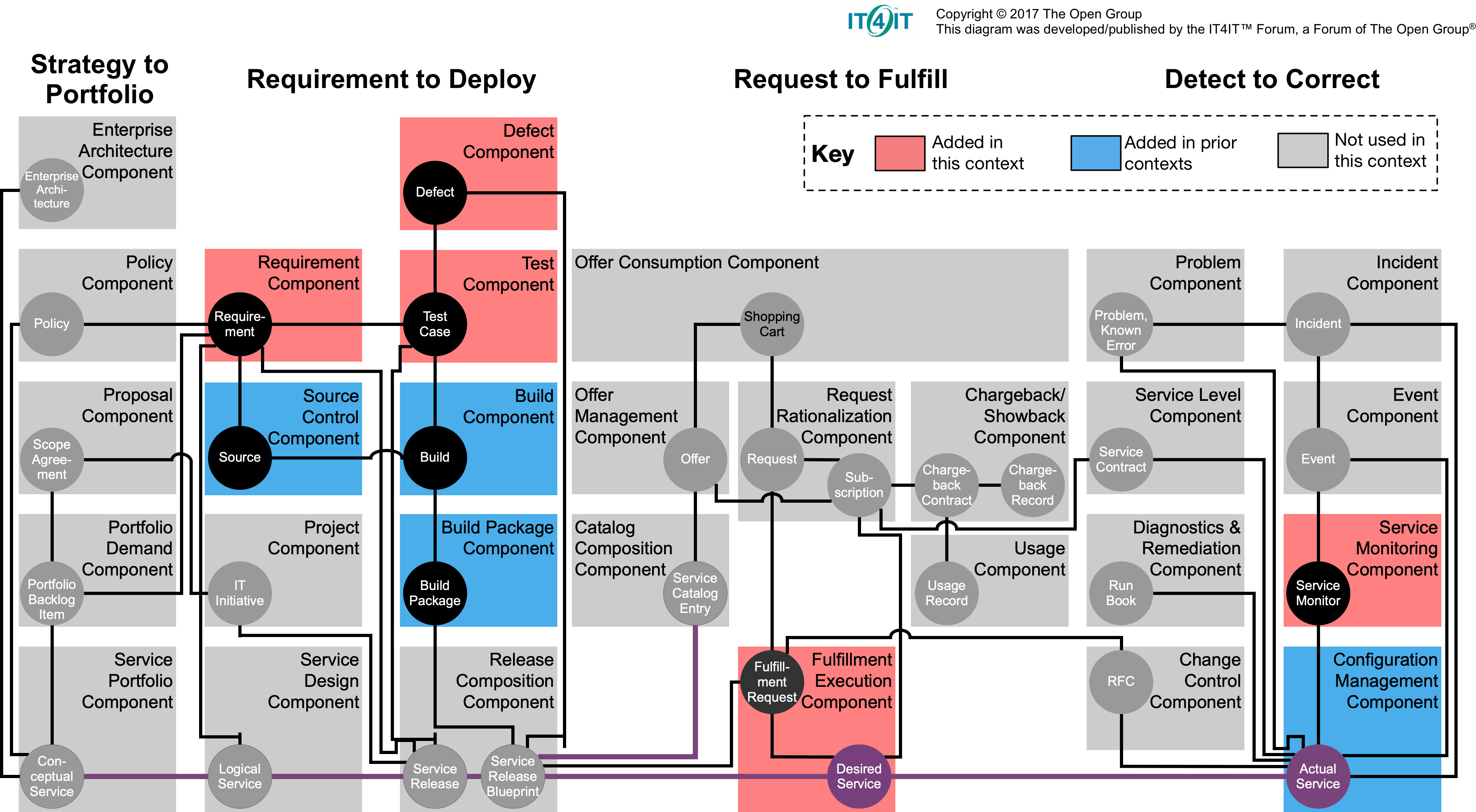Context II Conclusion
Context II covered the basic elements necessary for a collaborative product team to achieve success while still at a manageable human scale.
The IT-centric team needed capabilities for evolving its product, managing its work, and operating its product. In some cases, time and space shifting might drive the team to automate basic capabilities such as work management and ticketing. However, the overall assumption was that, for the most part, people are co-located and still can communicate with minimal friction.
Context II leads logically to Context III. There is a high-functioning team. But a single team cannot scale indefinitely. The Digital Practitioner now has no choice but to organize as a team of teams.
Context II Architectural View

Further automation is required at the team context, as product management is formalized and operational work such as provisioning and monitoring emerges. Suggested functional components are:
-
Requirement component
-
Test component
-
Defect component
-
Fulfillment Execution component
-
Service Monitoring component
One area that the IT4IT approach does not address is a simple “work management” component. In collaborative team environments, Kanban-based tools are often used to manage the human work in an undifferentiated flow (testing, defects, requirements, issues detected from monitoring).
Fulfillment Execution is included here to generically represent the digital product’s provisioning capability. For a single digital product, provisioning may or may not be distinct from the product architecture itself. At scale, it does become distinct and requires a more elaborate architecture.
Context II "Architectural View" Learning Objectives
-
Identify the IT4IT components suitable for Context II
Related Topics